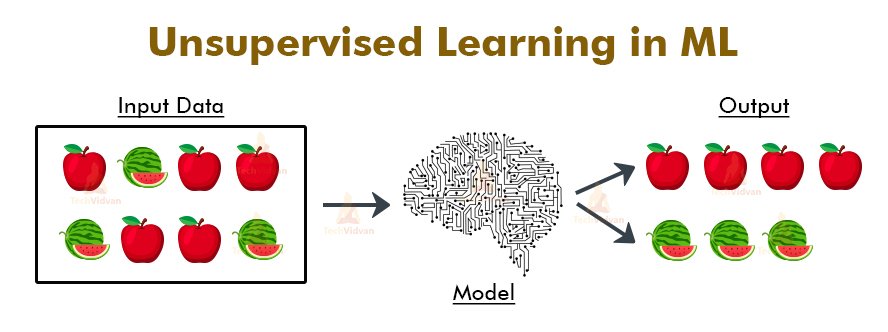What Is Unsupervised Learning?
Category: MACHINELEARNING | 30th March 2025, Sunday

Unsupervised Learning Is A Type Of Machine Learning Where Algorithms Analyze And Identify Patterns In Data Without The Need For Labeled Examples. Unlike **supervised Learning**, Where The Model Is Trained On Input-output Pairs, Unsupervised Learning Works With Unlabeled Data, Making It Ideal For Uncovering Hidden Structures, Groupings, Or Relationships In Large Datasets.
How Does Unsupervised Learning Work?
In Unsupervised Learning, The Model Receives A Dataset With Only Input Variables (features) And No Corresponding Output Labels. The Goal Is To Identify Inherent Patterns Or Clusters In The Data. The Algorithm Explores The Data Structure By Finding Similarities, Differences, And Relationships.
For Example:
- In Customer Segmentation, An Unsupervised Algorithm Might Group Customers Based On Purchasing Behavior, Even Though The Customer Categories Are Unknown Beforehand.
- In Anomaly Detection, The Model Identifies Unusual Patterns That Differ From The Majority Of The Data.
Key Techniques Of Unsupervised Learning
1. Clustering
Clustering Algorithms Group Similar Data Points Into Clusters Based On Shared Characteristics.
Examples:
- K-means Clustering: Groups Data Into A Predefined Number Of Clusters.
- Hierarchical Clustering: Creates A Tree Of Clusters.
- DBSCAN (Density-Based Spatial Clustering Of Applications With Noise): Groups Data Points Based On Density.
2. Dimensionality Reduction
Reduces The Number Of Features In The Dataset While Retaining Essential Information, Making The Data Easier To Visualize And Process.
Examples:
- Principal Component Analysis (PCA): Reduces Dimensions By Transforming Data Into Uncorrelated Components.
- t-SNE (t-Distributed Stochastic Neighbor Embedding): Visualizes High-dimensional Data In A Lower-dimensional Space.
3. Association Rule Learning
Identifies Relationships Between Variables In Large Datasets, Often Used In Market Basket Analysis.
Examples:
- Apriori Algorithm: Finds Frequent Itemsets And Derives Association Rules.
- Eclat Algorithm: Uses Set Intersections To Find Common Itemsets.
Applications Of Unsupervised Learning
- Customer Segmentation: Grouping Customers Based On Behavior For Targeted Marketing.
- Anomaly Detection: Identifying Fraudulent Transactions Or Security Breaches.
- Recommender Systems: Suggesting Products Or Content By Identifying Similarities Between Users Or Items.
- Data Compression: Reducing The Size Of Large Datasets Without Losing Meaningful Information.
- Genetic Data Analysis: Detecting Patterns In Genetic Sequences For Research And Medical Purposes.
Benefits Of Unsupervised Learning
- Discover Hidden Patterns: Uncovers Insights Without Pre-existing Labels.
- Handles Unlabeled Data: Utilizes Massive Amounts Of Raw, Unlabeled Data.
- Enhances Data Exploration: Helps Businesses Identify Unknown Trends Or Customer Behaviors.
Challenges Of Unsupervised Learning
- No Ground Truth: Since There Are No Labels, Evaluating Accuracy Is Difficult.
- Complex Interpretation: Clustering Results Can Sometimes Be Ambiguous Or Hard To Interpret.
- Computationally Intensive: Algorithms May Require Significant Computational Power For Large Datasets.
Conclusion
Unsupervised Learning Is A Powerful Machine Learning Technique That Reveals Hidden Patterns In Unlabeled Data. It Plays A Critical Role In Data Mining, Pattern Recognition, And Exploratory Data Analysis, Offering Valuable Insights In Various Industries, From Finance And Healthcare To E-commerce And Cybersecurity.
Tags:
Unsupervised Learning, What Is Unsupervised Learning, Unsl
